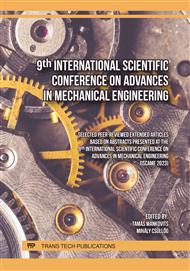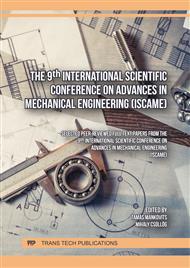p.23
p.31
p.39
p.47
p.55
p.65
p.79
p.89
p.99
Computational Fluid Dynamics Simulation of the Cooling of a Vehicle Alternator’s Stator Winding
Abstract:
In this paper, the cooling of a passenger car alternator’s stator winding is investigated with the help of computational fluid dynamics. The main heat sources are determined to be the stator winding and the diodes. Their respective heat loss is calculated and applied in the CFD software. In the first step, the CAD model is simplified in a way to enable a fine-quality numerical mesh generation, while keeping the important geometric features that could have significant effects on the results. In the next step, independence studies are carried out for the mesh, time-step size, and flow volume. A comparison is also presented between the steady “frozen rotor” approach and the transient “moving mesh” approach.After conducting the transient simulations at multiple operating points, the simulation results are evaluated with the help of contours and quantitative properties. An experimental comparison is presented which shows a good correlation between the simulated and the measured data, furthermore, the possible reasons for the deviations are eventually discussed. Finally, the benefits of the future applications of the simulation model are introduced briefly.
Info:
Periodical:
Pages:
99-107
Citation:
Online since:
July 2024
Authors:
Price:
Сopyright:
© 2024 Trans Tech Publications Ltd. All Rights Reserved
Share:
Citation:



